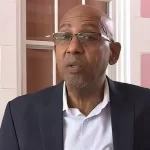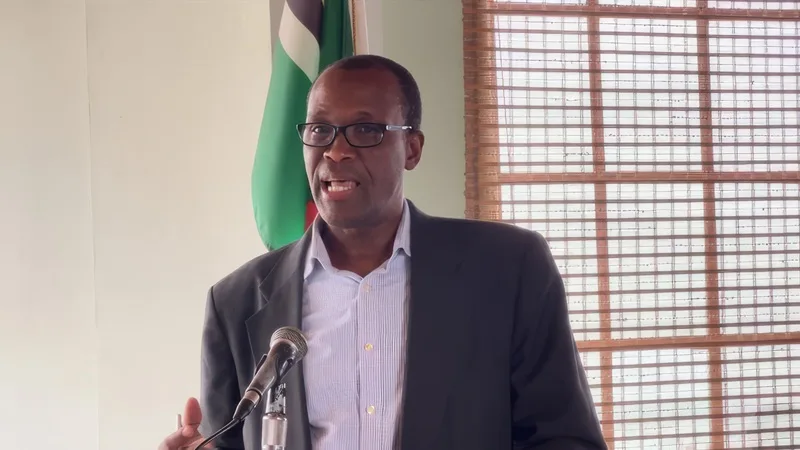Telecommunications Sector in Dominica

Across Dominica, the telecommunications sector has adapted to changing rules, shifting market forces, and growing connectivity needs in both densely settled and rural communities. Traditional systems operate alongside advanced network platforms that reach homes, enterprises, government services, and rural villages from Clifton to Scotts Head. Its growth is guided by international players, local providers, and national legislation that shapes service quality and user protection.
Historical Evolution Across Five Decades
The national system in the 1970s relied mainly on copper-based fixed lines operated by Cable and Wireless. Penetration remained low, with fewer than 4,000 active lines across the island by the late 1970s, most concentrated in Roseau, Portsmouth, and government facilities. International calls relied on high-cost switching stations, and technicians used microwave links and limited trunk circuits that were often disrupted by storms.
The 1980s brought incremental upgrades. Digital switching equipment slowly replaced older analogue systems, and additional microwave links improved inter-village connectivity. Fixed-line penetration increased through government expansion projects, but rural parishes still faced long waiting periods for installations. Rates for international calls during this period often exceeded EC$2.00 to EC$3.00 per minute for popular destinations, keeping long-distance communication out of reach for many families.
In the 1990s, regional liberalisation discussions began to influence national policy thinking. Cable and Wireless introduced early mobile services, though uptake remained modest due to handset costs and network limitations. The Telecommunications Act of 2000 marked a major turning point, opening the door to competition and creating the National Telecommunications Regulatory Commission (NTRC). This reshaped the landscape and prepared the ground for new entrants.
Digicel’s arrival in the early 2000s accelerated change. GSM networks replaced older technologies, handset costs fell, and prepaid plans became widely available. Within a few years, mobile penetration exceeded 85 percent, and by the mid-2010s, national penetration surpassed 100 percent, reflecting consumers with multiple SIM cards. Cable and Wireless later rebranded as FLOW, consolidating its regional operations.
The 2010s introduced 3G, then 4G LTE, along with the beginnings of fibre-to-the-home deployment. Hurricane Maria in 2017 damaged thousands of network components.
Sector Types and Technical Infrastructure
Dominica’s telecommunications industry spans a wide range of systems, each serving distinct needs:
- Mobile voice and data networks (2G legacy, 3G, LTE, ongoing 5G preparations)
- Fixed-line telephone services
- Fibre broadband networks in urban and peri-urban areas
- ADSL and VDSL services in communities still rely on copper
- Fixed wireless systems for remote areas
- Microwave backhaul links across interior valleys
- Satellite redundancy for emergency communication
- Undersea fibre-optic cable connections to regional and global networks
- Broadcast television infrastructure and cable networks
- Private networks for banks, government agencies, and utilities
This combination allows the country to maintain resilience against geographic challenges, population distribution, and weather conditions.
Market Players and Commercial Shifts
Cable and Wireless dominated the market for decades before competition emerged. Its transformation into Flow brought broader investment in broadband, television, and bundled services. Digicel’s entry disrupted pricing structures and rapidly expanded mobile coverage, especially across the east and northeast, where gaps previously existed.
Earlier providers such as Marpin Telecoms & Broadcasting introduced cable television and early internet services during the 1990s, particularly in Roseau and the surrounding districts. SAT Telecommunications Ltd. also played a role in cable and broadband services before market consolidation. Orange operated directly in Dominica through its France Telecom subsidiary, offering mobile services, prepaid plans, and international roaming before its acquisition by Digicel in 2009.
Modern operations involve extensive fibre deployment, upgraded LTE networks, improved customer support platforms, and access to international transit systems through regional backbone providers.
Pricing Trends and Household Affordability
During the 1970s and 1980s, international call rates made long-distance communication a luxury. Mobile services in the 1990s remained costly, with early per-minute charges well above EC$1.00. Liberalisation and competition in the 2000s dramatically reduced voice pricing. Prepaid minutes, on-network calling specials, and weekend promotions reshaped affordability.
Data pricing shifted even more sharply. Early plans in the mid-2000s offered only a few megabytes of usage. By the 2010s, consumers could access multi-gigabyte packages at prices comparable to regional averages. Improvements in global bandwidth markets and undersea cable costs brought further value. Providers introduced rollover data, streaming bundles, unlimited talk plans, and app-specific packages targeted at youth markets.
Fixed broadband prices traditionally ranged higher per megabit due to infrastructure costs. The shift to fibre allowed providers to offer faster plans without proportional price increases. Many residential packages now deliver speeds that would have cost several times more during the ADSL era.
Business pricing varies widely based on service-level agreements and dedicated bandwidth, but the availability of symmetrical fibre and microwave redundancy has improved enterprise reliability, encouraging the growth of digital commerce and cloud adoption.
Impact on Cost of Living and Standard of Living
Telecommunications has become a core component of household expenditure. Families allocate significant monthly spending toward mobile data, home broadband, and streaming services. Students depend on stable connectivity for assignments and research. In many homes, online access now functions as a basic utility alongside electricity and water.
Improved connectivity increased access to jobs, training, financial services, and communication tools. Telemedicine, virtual learning, mobile banking, and e-government portals raised living standards by reducing travel costs and saving time.
Workers in remote communities gained opportunities through online services, freelance platforms, and remote employment.
However, pricing still affects lower-income households. Many families rely solely on mobile data because installing fixed broadband is too costly. Device affordability remains a barrier, especially for secondary school students who require laptops or tablets.
Economic, Governmental, and Sectoral Influence
Telecommunications underpins the national economy. The tourism sector uses digital booking systems, online marketing, and navigation tools that depend on mobile coverage. Agriculture benefits from communication networks that support market coordination and farmer outreach. Transport systems rely on GPS, logistics software, and communication links. Government operations depend on secure networks to manage taxation, customs, public health, security forces, and emergency services. The Judiciary, Parliament, and ministries use digital platforms for information management, documentation, and internal communication.
The financial sector relies on stable telecom networks for ATM operations, card transactions, online banking, and fraud detection systems. Retail and service industries depend on POS networks, cloud databases, and online ordering platforms.
Rural Access and Interior Connectivity Challenges
While mobile coverage has expanded considerably since the 2000s, rural communities continue to experience variable service quality. Villages such as Delices, Boetica, Vieille Case, Morne Prosper, and parts of the Kalinago Territory historically encountered coverage gaps. Terrain, population density, and backhaul costs present difficulties for network expansion.
The government and the NTRC invested in universal service programs to address these disparities. Projects included Wi-Fi hotspots in schools and community centres, new towers in underserved districts, and support for digital learning infrastructure. Some eastern communities gained improved fixed wireless broadband, where fibre deployment remains challenging. Despite progress, environmental factors still influence service quality. Heavy rainfall affects microwave transmission, while landslides can disrupt fibre routes. Consistent maintenance and emergency preparedness remain essential for sustaining rural communications.
Infrastructure Upgrades and Disaster Resilience
Dominica’s telecommunications infrastructure evolved through multiple upgrade cycles. The 1990s introduced digital switching and early internet services. The 2000s expanded GSM networks and began the deployment of broadband. The 2010s marked significant fibre installations, LTE adoption, and cable system modernisation.
Hurricane Maria in 2017 caused extensive damage to towers, cables, switches, and power systems. In response, operators reconstructed networks using more resilient designs, including:
- Expanded underground fibre routes
- Reinforced towers with improved structural standards
- Additional backup power capacity
- Microwave redundancy in remote districts
- Hardened switching centres with new environmental safeguards
These upgrades better protect networks during storms and support continuity of operations for emergency teams, hospitals, and government operations.
Public Sector Connectivity and Digital Transformation
Government ministries increased their reliance on high-bandwidth connections to manage public databases, tax platforms, revenue systems, and national security communications.
Health centres upgraded digital links to support electronic medical systems and teleconsultations. Schools benefited from improved broadband capacity, enabling blended learning models and access to international academic resources.
National digital transformation strategies guided the expansion of e-government services, cybersecurity training, cloud adoption, and public Wi-Fi initiatives. Partnerships with regional institutions strengthened the island’s digital resilience and data governance.
Broadcasting, Media, and Information Access
Television and radio broadcasting form essential components of the communications landscape. Marpin Telecoms & Broadcasting, formerly a major cable provider, shaped viewing patterns from the 1990s onward. Regional and international content became widely accessible, and local broadcasters expanded their reach.
Online media and social platforms now dominate news distribution, affecting information flow, political engagement, and cultural expression. Mobile devices remain the primary access point for younger demographics, influencing national communication habits.
List Section: Key Legislative and Technical Elements
- The Telecommunications Act of 2000 established competition and licensing rules
- Numbering and spectrum allocation oversight by the NTRC
- Universal service obligations supporting rural coverage
- Tower and equipment approval processes linked to planning rules
- Quality-of-service standards and consumer protection clauses
- International connectivity via undersea optical cables
- Emergency communication protocols involving the government and operators
Long-Term Outlook and Sector Priorities
The national objective is universal, high-speed connectivity across all communities. Continued fibre expansion, improved rural backhaul, and the introduction of advanced mobile technologies remain central goals. Businesses increasingly request low-latency connectivity and cloud-ready services, influencing network evolution.
Consumers demand reliable streaming and gaming support, as well as flexible data plans, pushing operators to upgrade their capacity. Government seeks stronger cybersecurity frameworks, smoother public access to digital services, and improved emergency response systems.
With sustained investment, thoughtful regulation, and collaboration among providers, the telecommunications sector will continue shaping Dominica’s future development and quality of life.




